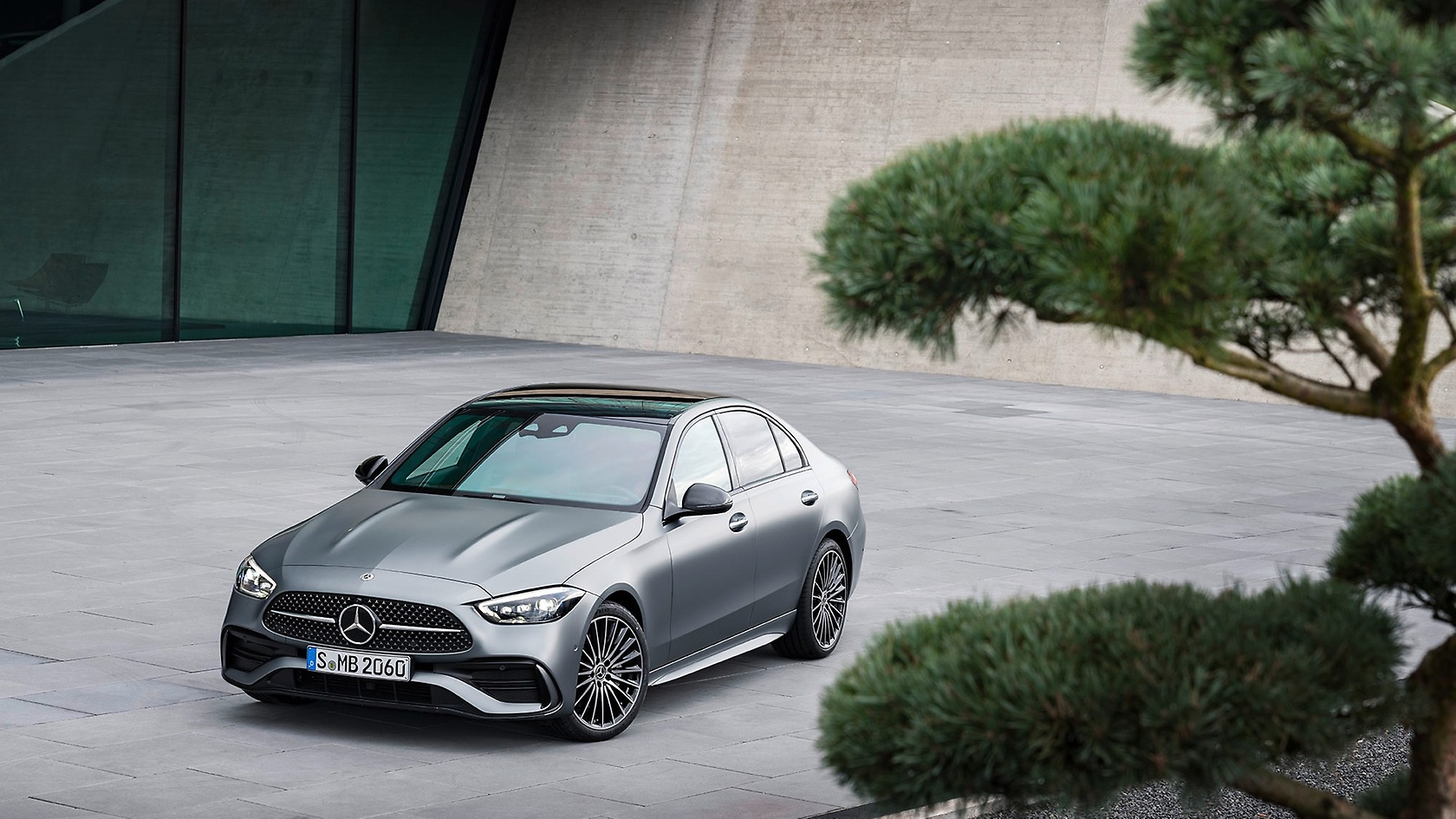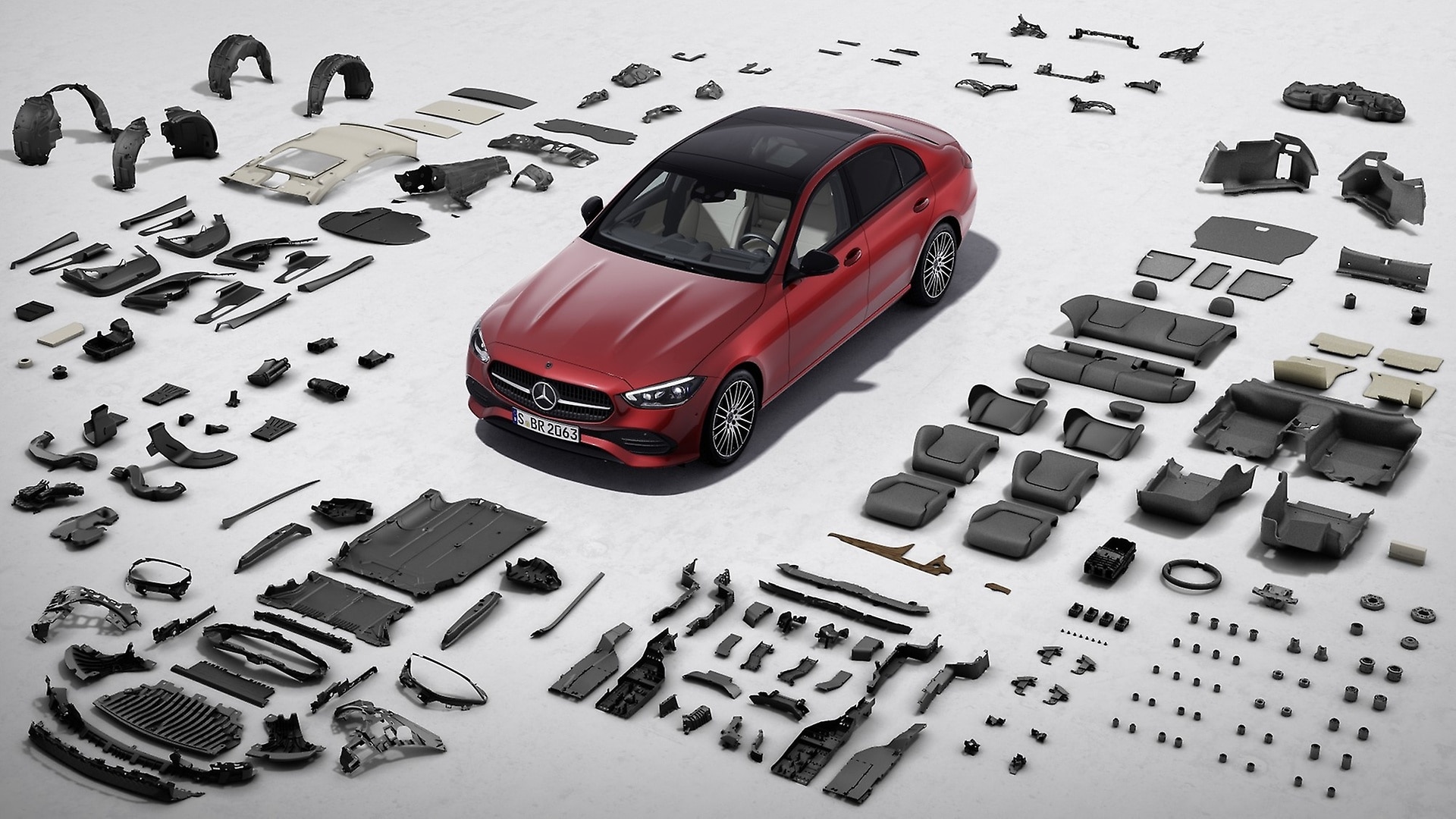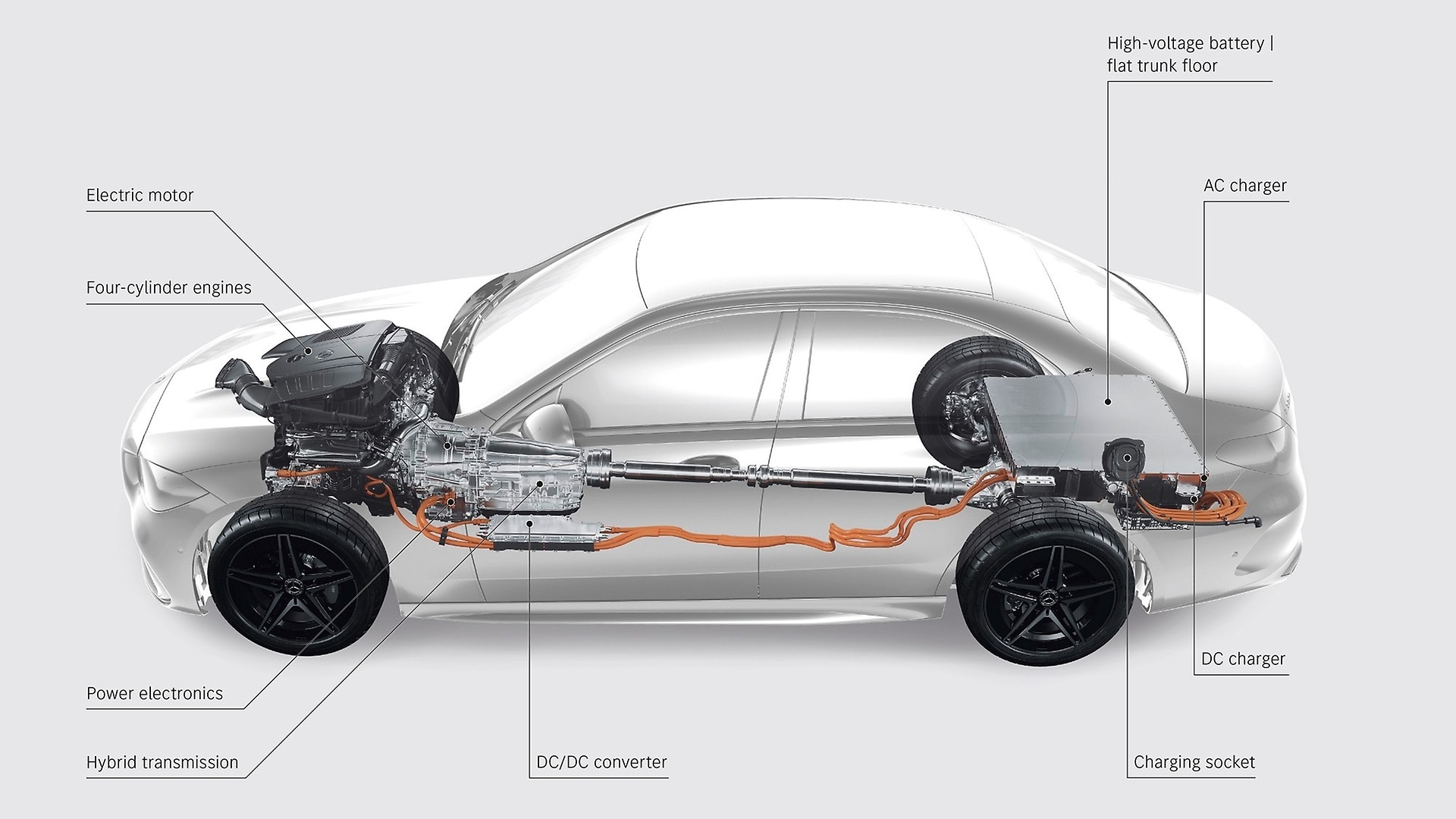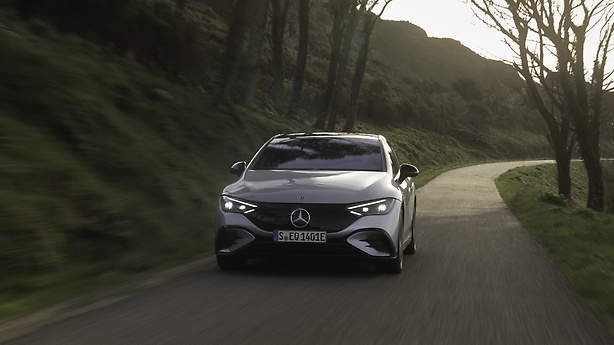April 06, 2023 – Important factors for the lifecycle assessment of a plug-in hybrid vehicle include the resources consumed in production and the charging processes of the high voltage battery during vehicle operation. In production, the additional drivetrain components of the new Mercedes-Benz C Class C 300 e plug-in hybrid sedan (WLTP: combined fuel consumption, weighted 0.7 – 0.5 l/100 km, combined CO₂ emissions, weighted 16 – 12 g/km, combined electrical power consumption, weighted 19.8 – 17.8 kWh/100 km)¹ require a greater use of material and energy resources
,xPosition=0,yPosition=1.0)
Environmental check


,xPosition=0.5,yPosition=0)
,xPosition=0.5,yPosition=0)